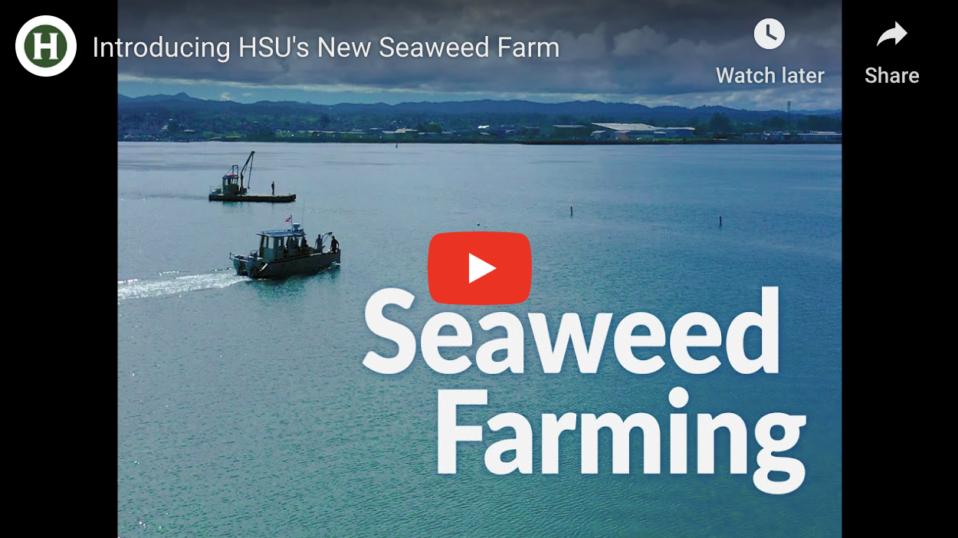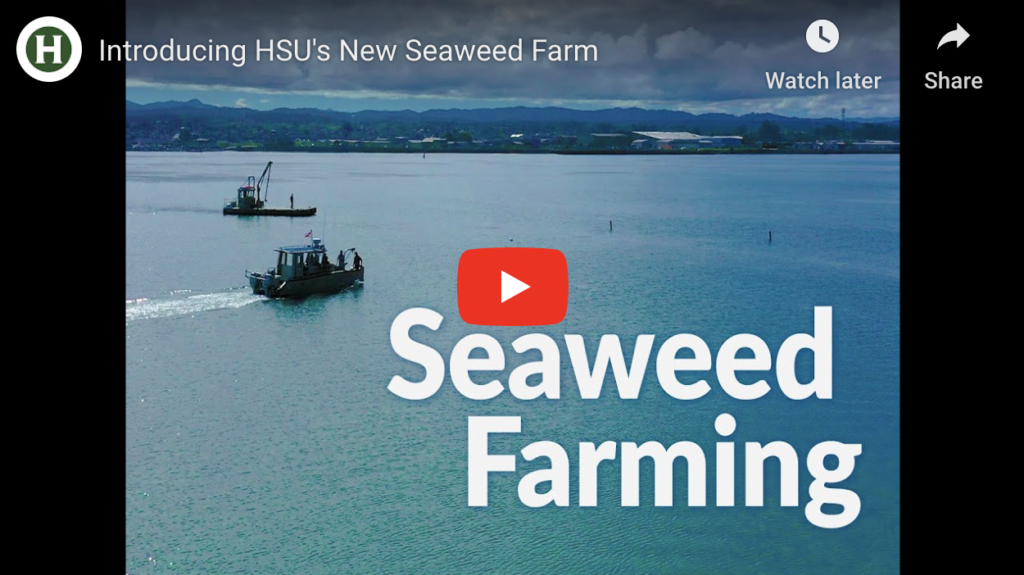Courtesy of HSU:
Humboldt Bay will be home to California’s first commercial, open-water seaweed farm. This pilot project, led by Humboldt State University and supported by GreenWave, stands to kickstart an industry where environmental sustainability and economic benefits go hand in hand.
“Seaweed farming is an industry that is about 500 years old,” said farm co-designer, HSU Fisheries Biology Associate Professor Rafael Cuevas Uribe. “But this is going to be the first time here in California that somebody’s doing red seaweed at commercial scale in open waters.”
The farm, called HSU-ProvidenSea, plans to grow native dulse seaweed (Palmaria mollis), which has a variety of uses from garden products to snacks. “We have been talking with the local fertilizer industry and they are interested in incorporating it as a soil amendment,” said Cuevas Uribe.
The project is a collaboration between Humboldt State and GreenWave, an environmental nonprofit that helps coastal communities to launch and scale regenerative ocean farms.
“It’s a low-impact design that really works with the environment,” said GreenWave’s California Reef Manager Karen Gray Geisler. “You don’t need fresh water, feed or fertilizer. The seaweeds are growing with the nutrients and the natural sunlight, and all it has to do is grow.”
And in so doing, the native seaweed creates habitat and hinders ocean acidification, all while absorbing excess phosphorus and nitrogen from the water. Clean water is essential to Humboldt Bay’s multimillion dollar shellfish industry. By intertwining industry with environmental stewardship, this type of aquaculture creates a financial incentive to keep the bay clean.
Visible only by its marker buoys, the farm sits near the Humboldt Bay shoreline inside a 550-foot long aquaculture site in Samoa, California. Below the surface, ProvidenSea will grow seaweed on lines called droppers, which are ropes descending from the main 350-foot long horizontal grow lines. Each dropper is seeded with seaweed grown at HSU’s Marine Lab. “We decided to use droppers because we wanted to compare how well the seaweed is going to grow at different depths,” said Cuevas Uribe.
Humboldt State students will gain practical experience managing the seaweed farm while experimenting with different cultivation methods and measuring bioremediation outcomes. Results will be made available to potential seaweed farm startups. The project was funded by the California State University’s Agricultural Research Institute and HSU’s Sponsored Programs.
“Our vision is to bring this new industry to Humboldt Bay, but we also want to be a leading example for the rest of California,” said Gray Geisler.




Recent Comments